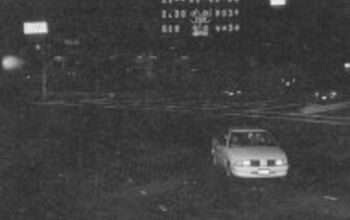California Appellate Courts Continue to Toss Red Light Camera Tickets
California courts continue to find the evidence provided by photo enforcement citations to be lacking. In both Orange, and San Mateo Counties, appellate division judges found the images presented in court by private vendors to be inadmissible hearsay. Late last month, Kern County joined the growing number of jurisdictions troubled by the quality of traffic camera evidence packages.
On January 19, 2010, Judge Charles R. Brehmer found a motorist guilty after reviewing the material provided by Redflex Traffic Systems, the for-profit company in charge of automated ticketing in America. The evidence consisted of a video, photographs and a declaration from Redflex regarding the manner in which the material was collected. The appellate judge was not impressed by its trustworthiness as the exception to the hearsay rule only applies to government employees.
“The custodian of records works for a private company, which installs and services red light cameras,” Judge Colette Humphrey wrote in a December 23 ruling. “The witness who testified at trial was unable to establish the method and time of preparation of the evidence offered so as to indicate its trustworthiness. Therefore, the people failed to establish the foundation necessary for the admission of the video and photographs.”
Because the lower court improperly admitted the evidence, Judge Humphrey overturned the decision and barred the state from attempting to refile charges on the grounds that there had been “significant prejudice to the appellant.” Similarly, a three-judge panel of the appellate division of the Orange County Superior Court strengthened its decision on December 27. The court considered a case where a police officer offered expert testimony more comprehensive than previously attempted.
Nonetheless, citing the Melendez-Diaz case from the US Supreme Court, the Orange County judges found that motorists had not relinquished their right to confront their accuser. The actual accuser, a Redflex employee, did not appear in court,
“Section 1553 sets forth a presumption that a printed representation of a digitally stored image is an accurate representation of the image it purports to represent, but that presumption is rebutted in this case as to exhibit 1 by the people’s own evidence that the photos in that exhibit were ‘derived from’ (i.e., were enhanced/altered/modified from) the photos contained in Exhibit 3,” Presiding Judge Gregory H. Lewis wrote.
Because the evidence was not admissible the charges were thrown out. A copy of the Bakersfield decision is available in a 220k PDF file at the source link below.
California v. Bevacqua (California Superior Court, Appellate Divison, 12/23/2010)
[Courtesy: Thenewspaper.com]
More by The Newspaper
Latest Car Reviews
Read moreLatest Product Reviews
Read moreRecent Comments
- Analoggrotto Tell us you aren't vying for more Hyundai corporate favoritism without telling us. That Ioniq N test drive must have really gotten your hearts.
- Master Baiter EV mandates running into the realities of charging infrastructure, limited range, cost and consumer preferences. Who could possibly have predicted that?
- Jkross22 Our experience is that the idea of leasing/owning an EV is better than the experience of getting a closer look at them and coming away underwhelmed.
- Ajla I never thought I'd advocate for an alphanumeric but "Junior" is a terrible name.
- Arthur Dailey So pay moving costs, pay penalties or continue to pay for space in the RenCen, and purchase all new furniture and equipment. Rather than just consolidating in place and subleasing. Another brilliant business decision.


































Comments
Join the conversation
Tell me why a private company is making SO much money from each ticket? How about the governments buy the equipment, run it themselves (like any other device) and pass the savings on to us? Oh wait, passing savings to the masses won't work. Nevermind.
The amount of mis-calibration is staggering. Camera companies will not even admit to those already discovered by lawyers and the public, let alone lay out all the possibilities. Get a good look at the installation manuals and you'll be aghast. One of my favorites is triggering the camera off the traffic controller computer sending the "turn off yellow--illuminate red" command. By the time the vehicle driver actually sees an 80% illuminated red, the camera has ticked off 0.9 seconds. The picture that includes the red light? It can have actually been snapped about 1.2 seconds after the controller issued the command. The vehicle shot can be +/- 0.3 seconds of that. In other words, the car photo, light photo, traffic light controller, and camera controller all march to their own timer delays, resulting in a mish-mash of what was happening when. The photo and video "evidence" should always be considered suspect.